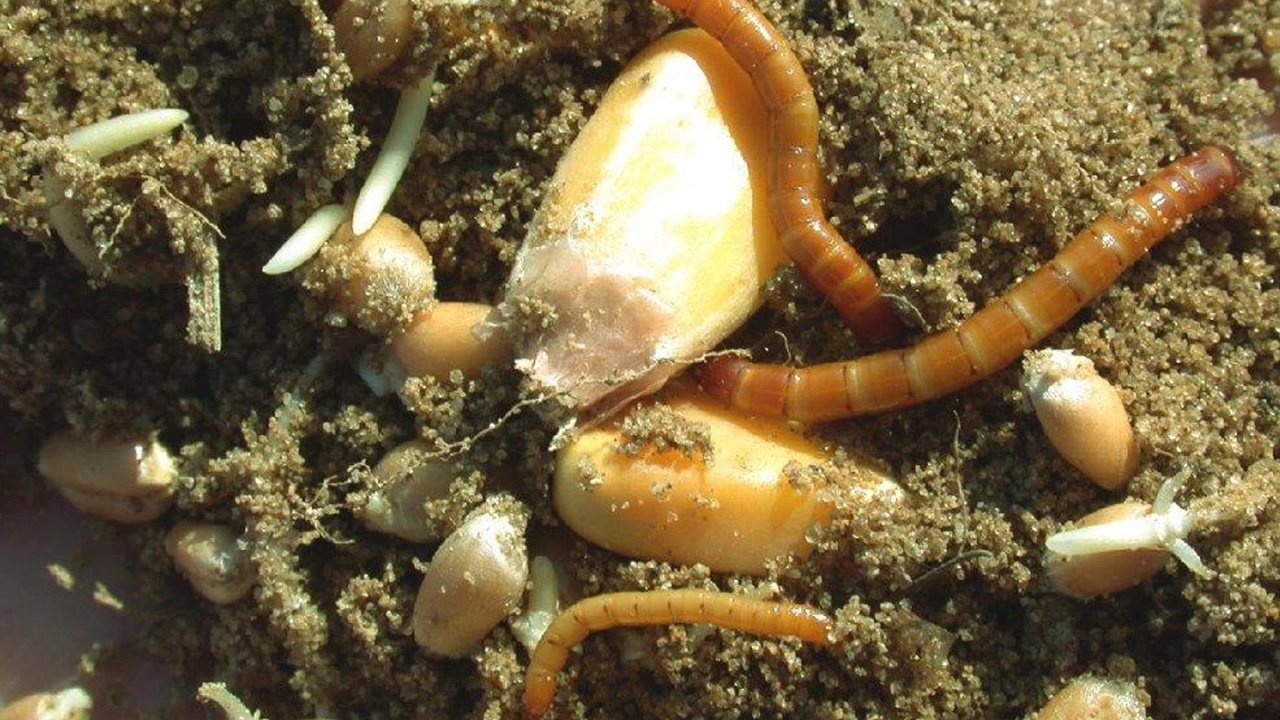How can I control soil-residing pests?

Answers are from the Indiana certified crop adviser panel: Dan Ritter, Dairyland Seed agronomist, Rensselaer; Bryan Overstreet, soil conservation coordinator, Rensselaer; Steve Gauck, Beck’s Hybrids, Greensburg; and Dan Quinn, Purdue Extension corn specialist.
We have relied on seed-applied insecticides over the past few years to take care of wireworm, seed corn maggot and other soil-residing pests like them. But we think we are seeing more damage and lost plants because of these pests. Should we switch to some other insecticide program at planting instead? Is there any recent data to guide us here?
Ritter: As the adage goes, “There is a difference between thinking and knowing.” If you have documented insect damage and yield loss, then consider using additional measures. Once you verify the level of damage, then you can calculate an accurate cost-versus-benefit analysis on the additional insecticide. Keep in mind that insect pressure can vary year to year based on weather and insect biology factors. Review the seed treatment package you have with your trusted seed supplier. Seed treatments vary from company to company, and they may have options to meet your needs without needing to apply additional insecticides.
Overstreet: If you are having problems with seed corn maggot, you could undergo some cultural changes, such as changing the planting date, observing when the fly population is not as high or not tilling up the residue just before planting. Organic matter can attract the fly. If you are having yearly issues in the same field, an in-furrow insecticide may be your best option. If wireworms are more problematic, several insecticides are labelled for wireworm. Some are for seed treatment and some are in-furrow, but all offer inconsistent control of the pest.
Gauck: These insects in certain areas have become a challenge. There are a few additional options with an in-furrow applied insecticide that can help, but they are not bulletproof. In many cases, controlling winter annuals with a fall or early spring herbicide application can help keep insect populations lower, and a seed-applied insecticide can be beneficial. On fields with a manure application, an in-furrow insecticide application would be beneficial.
Quinn: This Purdue University resource may help guide some further insecticide decisions. In addition, using a proper seed treatment can provide additional protection. However, it is important to consider some other cultural management practices such as planting date. For example, both wireworm and seed corn maggot are more likely to be issues in corn when conditions are cool and wet, and in areas that may have been manured, no-till or have heavy amounts of decaying residue. Therefore, delaying planting until warmer soil conditions are present may help. In addition, proper crop rotation and residue management also can help.

